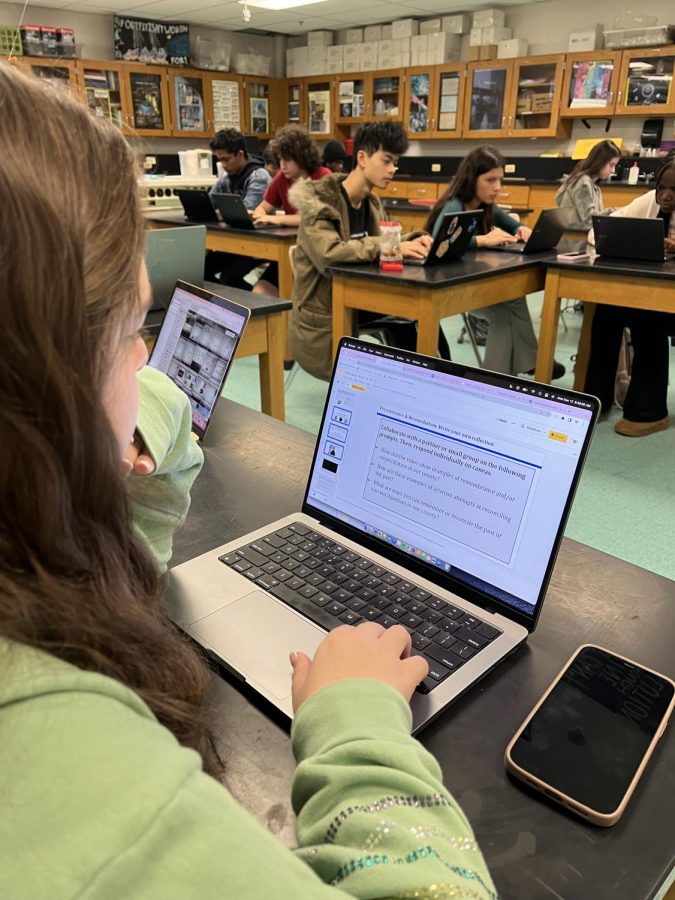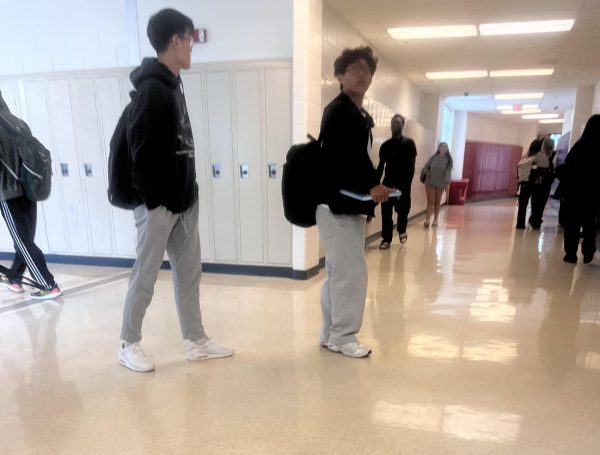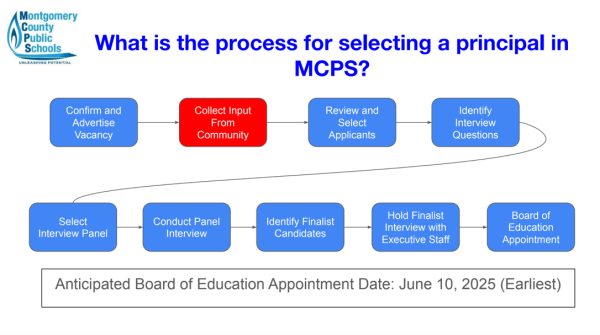Students educated during Remembrance and Reconciliation Month
Senior Kyley Kaplan reads over the lessons from Remembrance and Reconciliation Month.
During the month of November, Montgomery County Public Schools made an effort to observe Remembrance and Reconciliation Month. The idea of Remembrance and Reconciliation Month arose from the Montgomery County Office of Human Rights in order to influence a better understanding of the history as well as teaching about the legacy of the African Americans in the county. Toward the last week of November, all schools were provided with age appropriate lessons on local historic African American communities. Students were educated through their fourth period teacher.
Principal Douglas Nelson opened up the first slide presentation that was presented to students by talking about what the month is about and the goal that Montgomery County is striving for. The objective of the first lesson was that students would be able to locate the historic African American communities in the county and identify where these communities were in relation to their school. The essential questions that students were asked were, when were the historic Black communities of Montgomery County established and where are the historic Black communities of Montgomery County located? Students were able to look at a map and locate these communities near them. At the end, students had a follow-up assignment that had them watch two videos about the communities. They were then asked to answer one of the following prompts. The prompts were: what I learned about this community made me think…, what I learned about this community made me feel…, and what I learned about this community made me wonder… “I think students answering the prompts was a good opportunity for students to share their opinions,” senior Kyley Kaplan said.
The second lesson’s topic was about everyday life; this was introduced by David Bitler, a biology teacher. In the video, Bitler explained how in this lesson students would be able to identify and explain why African Americans turned inward and created communities to fulfill their social needs. In the course of the slideshow students had essential questions to think about such as why did Black Americans have to create their own spaces separate from white Americans and what were the Black communities like and how did they fulfill the social needs of Black Americans? Furthermore, students were able to observe photos and read about the historical aspects behind them. On the classroom page, students were able to do the same follow up prompt questions again. “I think it was nice to have a chance to look at the local history of the community,” science teacher James Forsberg said.
The third lesson focused on discrimination and the community’s response. In the course of the presentation, students were able to identify the discriminatory acts faced by historic Black communities and reflect on the different acts of resistance by Black Americans to ensure equal access and rights. The presentation was introduced by Tammie Burk, a media specialist. Students in the slideshow were able to choose a topic and review the resources that followed it. Students also had the opportunity to reflect and respond to the question of how did historic Black communities within Montgomery County fight the discriminatory laws and acts of terror of the local, state and federal governments and submit their answers on their Canvas page along with answering the same prompts as the other lessons.
Lessons four and five were presented by Quan Duong, a studio art teacher and Jeffrey Steinbach, a history and special education teacher. Lesson four focused on identifying and explaining how different communities and organizations have attempted to reconcile past injustice toward African Americans. The essential questions students would look for were: how has Montgomery County attempted to reconcile past injustice, how have local residents attempted to reconcile past injustices, and what actions can still be done to reconcile past injustices? Lesson five was a presentation that brought everything together. Students were able to identify ways students and community members can remember and/or reconcile past or current injustices in our county. In both of the lessons, students were again asked to answer the follow up prompts on their classroom page.
At the end of the final lesson, students were given the opportunity to write a reflection. Students could select a statement they most agree with and provide support using evidence they found in the resource they were provided then, they were able to submit their response on Canvas. The two statements students could choose from were: statement A: Montgomery County has attempted to remember and reconcile past injustices or statement B: There needs to be more done to remember and reconcile past injustices. “I wrote my response on statement A for the final reflection. I thought Remembrance and Reconciliation week was super informative, educational and I enjoyed learning about historical aspects of our community,” junior Esteban Taborga said.
Your donation will support the student journalists of Thomas S. Wootton High School. Your contribution will allow us to purchase equipment and cover our annual website hosting costs.
Jolie is a 2023 graduate.







